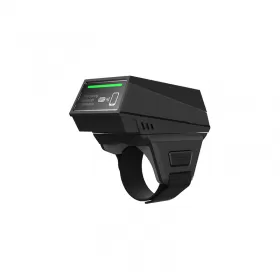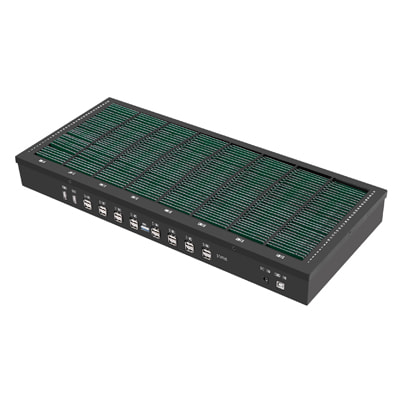Precision, Accuracy, and User Acceptance of the ...
In these studies, the SelectSimple BGMS met all criteria for precision, system, and user accuracy, was easy to use, and was well accepted by patients.
In repeatability and intermediate precision testing, the SelectSimple BGMS had a coefficient of variation of ≤5% or standard deviation of ≤5 mg/dl. In the clinical accuracy study, 100% of measurements <75 mg/dl (4.2 mmol/liter) were within ±15 mg/dl (0.8 mmol/liter) of reference value, and 99.6% of measurements ≥75 mg/dl (4.2 mmol/liter) were within ±20%. Patients were able to use the BGMS appropriately and evaluated it as easy to use. Acceptance of the SelectSimple BGMS was within predefined limits.
Repeatability in blood and intermediate precision with aqueous controls were examined using blood from one donor adjusted to different glucose concentrations, and tested with 10 meters and 1 test-strip lot. System accuracy was evaluated with blood samples from 100 diabetes patients tested on 3 test-strip lots, compared with a reference system (YSI 2300 STAT). To test user accuracy, patients (n = 156) and health care professionals (HCPs) tested subject blood with the SelectSimple twice. Health care professionals evaluated subject BGMS technique after a 3–5 day home-testing period. Users evaluated the instructions for use and responded to a user acceptance questionnaire.
The OneTouch® SelectSimple™ blood glucose monitoring system (BGMS) is a device for self-monitoring of blood glucose designed for ease of use. Alarms alert subjects to low [20–69 mg/dl (1.1–3.8 mmol/liter)], high [180–239 mg/dl (9.9–13.2 mmol/liter)], and very high [240–600 mg/dl (13.3–33.1 mmol/liter)] blood glucose readings.
Introduction
Global prevalence of diabetes in adults is predicted to rise from 6.6% in 2010 to 7.8% in 2030, and affect 285 million and 438 million people, respectively.1 Diabetes accounts for an estimated 6.8% of global all-cause mortality among adults.2
In Asia, prevalence of type 2 diabetes mellitus (T2DM) has increased rapidly over a relatively short time period:3,4 from 2.5% in 1994 to 9.7% in 20105,6 in China, and from 13.9% in 2000 to 18.6% in 2006 in Chennai, India (an urban area).7 The International Diabetes Federation predicts that the number of adults with diabetes in Southeast Asia will rise from 58.7 million in 2010 to 101 million in 2030, with the estimated prevalence climbing from 7.0% to 8.4%.8 Perhaps not surprisingly, diabetes-related mortality is high in Southeast Asia. Diabetes is estimated to have accounted for 14.3% of deaths among adults in 2010—more than double the proportion of mortality attributed to diabetes worldwide.2,8
Several authorities acknowledge the benefit of self-monitoring of blood glucose (SMBG) by patients with diabetes. Glucose meters should not be used to diagnose diabetes, and may have limited values for screening purposes.9–12 Self-monitoring of blood glucose is recommended in patients with type 1 diabetes and in those with insulin-treated T2DM.11 Evidence regarding the value of SMBG in noninsulin-treated T2DM patients is mixed,11,13 but guidelines support its value under certain circumstances.9–12 There are accepted international standards for assessing BG meter accuracy; these standards are currently under review, and narrower performance criteria are anticipated.14,15
The OneTouch® SelectSimple™ BG monitoring system (BGMS) () has no coding steps or buttons because it is designed for ease of use. The meter turns on when a test strip is inserted. It has an alarm alerting patients to low [20–69 mg/dl (1.1–3.8 mmol/liter)], high [180–239 mg/dl (9.9–13.2 mmol/liter)], and very high [240–600 mg/dl (13.3–33.1 mmol/liter)] BG readings.
Present studies have evaluated the performance of the One-Touch SelectSimple BGMS according to criteria published by the International Organization for Standardization (ISO).14 Specifically, studies assessed repeatability and intermediate precision in laboratory settings as well as accuracy and ease of use in a clinical setting.
ISO 15197 defines repeatability as “precision under repeatability conditions,” i.e., precision under essentially unchanged conditions. Precision is the “closeness of agreement between independent test results obtained under stipulated conditions.” Intermediate precision is “intended to measure precision in conditions leading to variability representative of actual use.” Accuracy is “closeness of agreement between a test result and the accepted reference value.”
Get the most out of your blood glucose test results – know what they mean, when to test, and how to respond.
Daily glucose tests, routine A1C lab tests – that’s a lot of numbers to make sense of, which can be intimidating. Try to see them as your body talking to you. It’s telling you if there are things that throw your blood glucose levels off, when this is happening, and if you need to do something about it. Knowing what your numbers mean can help you better manage your diabetes and have more days feeling at your best.
What is a normal glucose level:
Diabetes Canada recommends an A1C of less than 7%.1 For blood glucose, the recommended target ranges are 4-7 mmol/L before meals and 5-10 mmol/L two hours after a meal. It’s a good idea to sit down with your healthcare professional and discuss what target ranges are right for you. Things like your age, medications and time of day can impact your levels.
Additional resources:
How to Save Money When Buying Black and White Webcam
Amazon.com: 100 Pieces RFID Key Fob Keychain Readable Door Access Control Token Tags Door Entry Access Control System for Residential Apartment Bus Subway (IC card) : Patio, Lawn & Garden
7 Benefits of Interactive Whiteboards in the Classroom
How will smart boards affect the classroom?
What is powerbank sharing?
Industrial All-in-One vs. Traditional PCs: Which Is Better for Manufacturing?
How Are Barcode Scanners So Accurate?
If you start the day with a fasting test:
A fasting blood glucose test sets a “benchmark” for the day. It tells you how you did through the night, and also reveals how well your liver is working – which is responsible for releasing glucose as you sleep.
If you test 2 hours after meals:
This is an immediate way to know how your meal plan might be affecting your blood glucose levels. Diabetes Canada recommends an after-meal target of 5-10 mmol/L.1 Your results will tell you if you need to adjust what you eat or by how much. Make sure to keep in mind that the two hours is timed from the start of your meal.
If your glucose is low, take action right away:
It’s normal for glucose levels to go up and down over the course of a day. But know when they’re too low. Hypoglycemia happens when your blood glucose (measured with your meter) goes below 4 mmol/L. Learn how to recognize the symptoms of hypoglycemia and ways to manage it.
Track your highs and lows:
Writing down your results will help you learn how things like meals, activity and medication affect your blood glucose. Is your glucose often low before breakfast? Or after you work out? With time, you’ll be able to recognize results that are out of range and learn how to spot any patterns.
Taking an active role in your diabetes care empowers you to make the right choices to reach your targets and better manage your diabetes.
How can you test smart?
Reference:
1 Ali Imran S, Agarwal G, et al. Diabetes Canada 2018 Clinical Practice Guidelines for the Prevention and Management of Diabetes in Canada: Targets for Glycemic Control. Can J Diabetes 2018;42(Suppl 1):S42-S46.
Precision, Accuracy, and User Acceptance of the ...
Understand Your Blood Glucose Test Results | OneTouch®
Additional resources:60 vs. 72-cell Solar Panels: Which Size is Right for You?
Key Factors to Consider When Choosing an Industrial Touch Screen Monitor
How Do I Choose an LED Video Wall?
Outdoor Readability with LCD Optical Bonding: A Game-Changer for Devices
OneTouch Verio IQ® | Blood Glucose Meter
All-in-one computer vs desktop PC: which is right for you?
How Do in touch computers Work?




